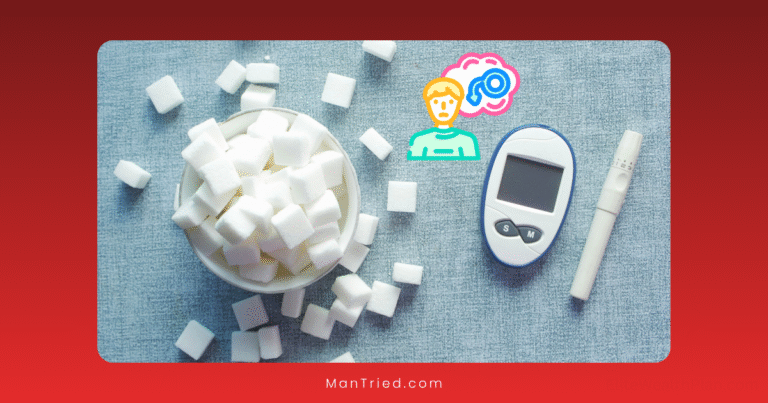Treatment Options for Peyronie’s Disease in 2025: A Comprehensive Guide

Peyronie’s disease—characterized by fibrous scar tissue formation in the penis that causes curvature, pain, and potential erectile dysfunction—affects approximately one in ten men during their lifetime. While this condition was once considered difficult to treat effectively, 2025 has brought significant advancements in both traditional and innovative therapies.
If you or someone you know is dealing with Peyronie’s disease, understanding the full spectrum of current treatment options is essential for making informed decisions. This comprehensive guide explores everything from non-invasive approaches to surgical interventions, with special attention to the newest developments in Peyronie’s treatment.
Understanding Treatment Timing: Acute vs. Chronic Phase
Before diving into specific treatments, it’s crucial to understand that Peyronie’s disease progresses through two distinct phases, and treatment recommendations differ for each phase.
The Acute Phase
The acute phase typically lasts 5-18 months from symptom onset and is characterized by:
- Active inflammation
- Pain during erections
- Progressive changes in penile curvature
- Ongoing plaque formation
According to the Mayo Clinic, treatments during this phase focus on preventing worsening curvature and preserving penile length. Surgery is generally not recommended during the acute phase.
The Chronic Phase
The chronic phase begins when:
- Pain has resolved
- Curvature has stabilized (no changes for at least 3-6 months)
- Plaque calcification may have occurred
During this phase, more definitive treatments including surgery may be considered if the deformity is severe enough to prevent sexual intercourse.
Non-Surgical Treatment Options
1. Penile Traction Therapy (PTT)
Penile traction therapy has emerged as a frontline treatment for Peyronie’s disease in 2025, with stronger evidence supporting its efficacy than ever before.
How it works: PTT devices apply gentle, consistent stretching forces to the penis, which may help remodel scar tissue, reduce curvature, and preserve or restore penile length.
Latest developments: According to Hightower Men’s Health, newer PTT devices in 2025 offer improved comfort and convenience, with some designed for discreet wearing under clothing. Studies now show that PTT is the only non-surgical treatment proven to address penile shortening—a significant concern for many patients.
Effectiveness: Recent studies indicate that consistent use (typically 3-8 hours daily for 3-6 months) can reduce curvature by 20-40 degrees and increase penile length by up to 1-2 cm.
Best candidates: PTT can be used in both acute and chronic phases and is particularly effective when started early. It’s also increasingly recommended as a complementary therapy alongside injections or following surgery.
2. Injectable Treatments
Collagenase Clostridium Histolyticum (Xiaflex®)
Xiaflex remains the only FDA-approved medication specifically for Peyronie’s disease in 2025.
How it works: This enzyme breaks down collagen, the main component of Peyronie’s plaques.
Latest protocols: The traditional protocol involved four treatment cycles, each consisting of two injections separated by 24-72 hours. However, as reported by Cleveland Clinic, modified protocols in 2025 have shown significantly improved outcomes:
- Higher volume injections
- Reevaluation of injection locations based on ultrasound guidance
- Addition of tadalafil (Cialis) to the treatment regimen
- Shortened intervals between injections (less than 24 hours)
- More vigorous modeling and stretching techniques
Effectiveness: While original studies showed modest improvements of about 6 degrees better than placebo, these modified protocols have demonstrated curvature improvements of up to 60%—a dramatic increase in efficacy.
Best candidates: Men with curvatures between 30-90 degrees in the stable phase of Peyronie’s disease without significant calcification of the plaque.
Verapamil Injections
How it works: This calcium channel blocker may disrupt collagen production and promote remodeling of existing scar tissue.
Latest developments: While still considered off-label, verapamil injections have gained more acceptance in 2025 due to their lower cost compared to Xiaflex and reasonable safety profile.
Effectiveness: Studies show variable results, with curvature improvements typically ranging from 10-30 degrees after a series of 6-12 injections.
Best candidates: Patients in the early phase of Peyronie’s disease or those who cannot afford Xiaflex treatments.
Interferon Injections
How it works: Interferon has anti-inflammatory and anti-fibrotic properties that may help break down fibrous tissue.
Effectiveness: Research from 2025 shows modest improvements in curvature (10-20 degrees) and reduction in plaque size in about 50% of patients.
Best candidates: Similar to verapamil, interferon may be an option for patients in the acute phase or those seeking alternatives to Xiaflex.
3. Emerging Non-Surgical Treatments
Low-Intensity Shockwave Therapy (LiST)
How it works: LiST applies acoustic waves to the affected tissue, potentially promoting tissue regeneration and reducing inflammation.
Latest research: According to UroToday, 2025 has seen increased interest in LiST as a non-invasive option, with new protocols specifically designed for Peyronie’s disease.
Effectiveness: Early studies suggest improvements in pain and curvature in 40-60% of patients, though more research is needed.
Best candidates: This may be suitable as a first-line treatment in the acute phase or for patients who prefer non-invasive approaches.
Transdermal Treatments
How they work: Topical medications applied to the skin of the penis aim to penetrate to the tunica albuginea where plaques form.
Latest developments: A novel transdermal gel called H100 has shown promise in 2025 research, with studies confirming its ability to infiltrate the tunica albuginea—a significant advancement over previous topical treatments that failed to penetrate deeply enough.
Effectiveness: While still in clinical trials, preliminary results suggest modest improvements in plaque size and pain.
Best candidates: Patients in the early acute phase who prefer non-invasive treatments.
Phosphodiesterase Inhibitors
How they work: Research published in early 2025 highlighted the potential of phosphodiesterase (PDE) inhibitors—particularly those targeting PDE1 and PDE4—to prevent myofibroblast transformation, a key cellular process in Peyronie’s disease development.
Current status: These treatments remain experimental but represent a promising direction for future therapies focused on disease prevention rather than just symptom management.
Surgical Treatment Options
When non-surgical treatments fail to provide adequate improvement, or when the deformity is severe enough to prevent sexual intercourse, surgical intervention may be recommended. Surgical options have also seen refinements in 2025.
1. Penile Plication Techniques
How they work: These procedures involve placing sutures on the side of the penis opposite to the curvature to straighten it.
Latest developments: Newer plication techniques in 2025 focus on minimizing the risk of palpable sutures and preserving penile length.
Effectiveness: Success rates remain high at 85-95% for achieving penile straightening.
Best candidates: Men with curvatures less than 60 degrees without significant shortening or erectile dysfunction.
2. Plaque Incision/Excision with Grafting
How it works: The surgeon makes incisions in or removes the plaque and places a graft material in the defect.
Latest developments: A September 2025 study reported by UroToday highlighted a cost-effective modified split graft technique using bovine pericardium after plaque excision. Additionally, a novel autologous material—the outer plate of the prepuce—was proposed for grafting in July 2025.
Effectiveness: These newer grafting materials and techniques aim to reduce complications while maintaining the 70-80% success rates of traditional grafting procedures.
Best candidates: Men with more severe curvatures (>60 degrees), significant shortening, or hourglass deformities who still have good erectile function.
3. Penile Prosthesis Implantation
How it works: For men with both Peyronie’s disease and erectile dysfunction, implantation of a penile prosthesis combined with additional straightening techniques can address both issues simultaneously.
Latest developments: In May 2024, the first worldwide correction of ventral Peyronie’s disease using an inflatable penile prosthesis combined with plaque incision and grafting was documented, with this approach gaining wider adoption in 2025.
Effectiveness: Success rates for combined prosthesis implantation and straightening exceed 90% for restoring both straightness and erectile function.
Best candidates: Men with significant erectile dysfunction in addition to Peyronie’s disease.
Combination Approaches
One of the most significant trends in 2025 Peyronie’s disease management is the increasing use of combination therapies.
Traction + Injections
Combining penile traction therapy with injectable treatments like Xiaflex has shown synergistic effects. The Cleveland Clinic reports that this combination resulted in a 50% improvement in treatment efficacy compared to Xiaflex alone.
Pre-Surgical Traction
Using traction therapy before surgical intervention may help maximize penile length preservation and potentially improve surgical outcomes.
Choosing the Right Treatment Approach
With so many options available, how do you determine which treatment is right for you? Consider these factors:
1. Disease Phase
- Acute phase: Focus on non-surgical options like traction therapy, injectable treatments, and emerging therapies
- Chronic phase: All options including surgery may be considered
2. Severity of Symptoms
- Mild curvature (<30 degrees): Conservative approaches may be sufficient
- Moderate curvature (30-60 degrees): Injectable treatments often combined with traction
- Severe curvature (>60 degrees): May require surgical intervention
3. Associated Symptoms
- Erectile dysfunction: Influences treatment selection, may indicate need for prosthesis
- Significant shortening: May benefit from traction therapy or certain surgical approaches
- Pain: Usually addressed first before tackling curvature
4. Personal Preferences and Goals
Treatment should align with your specific goals, whether that’s pain reduction, improved sexual function, cosmetic improvement, or a combination of these outcomes.
The Importance of Specialized Care
Given the complexity of Peyronie’s disease and the rapidly evolving treatment landscape, seeking care from urologists who specialize in this condition is crucial. These specialists stay current with the latest research and can offer the most advanced treatment protocols, some of which may not yet be widely available.
Looking Forward: What’s on the Horizon?
Research into Peyronie’s disease treatment continues to accelerate. Areas to watch include:
- Stem cell therapies: Early research suggests potential for regenerative approaches
- Platelet-rich plasma (PRP): Still controversial but gaining research interest
- Anti-fibrotic medications: New drugs targeting the biological pathways of fibrosis
- Improved delivery systems: For getting medications directly to the plaque
- Genetic approaches: As we better understand genetic predispositions to Peyronie’s
Conclusion
The treatment landscape for Peyronie’s disease in 2025 offers more options and better outcomes than ever before. From improved non-surgical approaches like modified injection protocols and advanced traction devices to refined surgical techniques and promising emerging therapies, men with Peyronie’s disease have real reasons for optimism.
The key to success lies in early intervention, accurate diagnosis, and individualized treatment planning with a specialist who understands the full spectrum of available options. With the right approach, the vast majority of men with Peyronie’s disease can expect significant improvement in both physical symptoms and quality of life.
Have you or someone you know been treated for Peyronie’s disease? What was your experience with treatment? Share your story in the comments below to help others navigating this condition.






